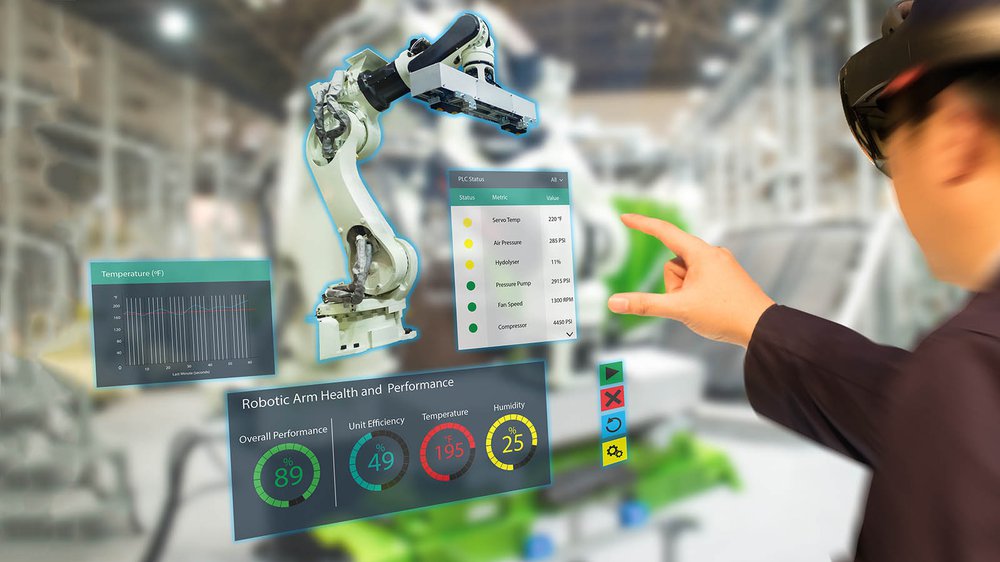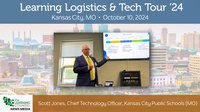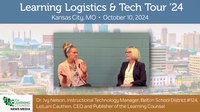Last week, President Trump signed legislation that renewed and updated the Carl D. Perkins Career and Technical Education Act, the primary funding source from the federal government for CTE offered in high schools as well as after graduation. Proponents of the bill estimate the program will help 11 million people develop knowledge and skills needed to find well-paying jobs.
These future jobs, however, may be hard to define. According to a report from The Institute of the Future, “At its inception, very few people anticipated the pace at which the internet would spread across the world, or the impact it would have in remaking business and culture. And yet, as journalist Oliver Burkeman wrote in 2009, ‘Without most of us quite noticing when it happened, the web went from being a strange new curiosity to a background condition of everyday life.’
Today’s emerging technologies also feel like strange, new curiosities. Artificial Intelligence (AI), augmented and virtual reality, home robots, and cloud computing, to name only a few of the sophisticated technologies in development today, are capturing the imaginations of many. The advanced capabilities of today’s emerging technologies are driving many academics, entrepreneurs, and enterprises to envision futures in which their impacts on society will be nothing short of transformative.”
The report outlined four transformative areas which will impact the future economy and drive future employment.
Robotics
“Rapid developments across science, technology, engineering, and communications have brought about what has been called the new Industrial Revolution, or “second machine age,” which will greatly expand robots’ competencies and functions. With these changes, a whole suite of jobs is being reimagined as automation displaces and disrupts human labor, the benefits of which have been well chronicled. While offshoring manufacturing jobs to low-cost economies can save up to 65% on labor costs, replacing human workers with robots can save up to 90 percent of these costs. China is currently embarking upon an effort to fill its factories with advanced manufacturing robots, as workers’ wages rise and technology allows the industry to become more efficient. The province of Guangdong, the heartland of Chinese manufacturing, has promised to invest $154 billion in installing robots. According to a report released by PwC, (PricewaterhouseCoopers International Limited) more than a third of U.K. jobs could be at “high risk” of automation by the early 2030s and robots could take over 38 percent of current U.S. jobs in the next 15 years.”
Artificial Intelligence and Machine Learning
“Artificial Intelligence has come a long way from the days of Herbert Simon’s Logic Theory Machine program in 1956. Since 1997, when a chess-playing computer, Deep Blue, beat Gary Kasparov, the reigning world chess champion, machines have become smarter, faster and able to manage increasingly complex tasks. Approximately 1,500 companies in North America alone are doing something related to AI today, which equates to less than 1 percent of all medium-to-large companies. We’re seeing this in the financial services industry already, with data recognition, pattern recognition, and predictive analytics being applied to huge data sets on a broad scale. In a 2015 report, Bank of America Merrill Lynch estimated that the AI market will expand to $153 billion over the next five years—$83 billion for robots, and $70 billion for artificial intelligence-based systems.”
Virtual Reality and Augmented Reality
“Although both Virtual and Augmented Reality are changing the form factor of computing, there is a simple distinction between the two. VR blocks out the physical world and transports the user to a simulated world, whereas AR creates a digital layer over the physical world.
Right now, analysts project revenues associated with AR technologies and services will grow to about $90 billion by 2020, the majority of which will be generated through revenue spent on hardware. VR is forecasted to grow more modestly, increasing to $30 billion by 2020.”
Cloud Computing
“It’s important to recognize that Cloud Computing isn’t a place, it’s a way of doing IT. Whether public, private, or hybrid (a combination of private and public), the technology is now used by 70 percent of U.S. organizations. This figure is expected to grow further, with 56% of businesses surveyed saying they are working on transferring more IT operations to the cloud, according to IDG Enterprise’s 2016 Cloud Computing Executive Summary.”
Predicting the Future Economy
For the fiscal year 2018, the Department of Education is providing a total of $1.17 billion for the Perkins grants. Most of that total is divided by a formula among the states, District of Columbia and U.S. territories and possessions. For the most part, it is up to the individual states to determine in which direction this career and technical education will send their learners. In order to prepare their students for a future economy that is unknown, states are offering courses in a variety of fields including cyber security, drone technology, data analysis, robotics, virtual reality the space industry and more. Many are utilizing companies like eDynamic Learning, which offers more that 100 career and elective courses including Biotechnology, Cyber Security, Forensic Science and Game Design.
Cyber Security
Some estimates place the number of unfilled cyber security jobs at more that one million. That number is expected to grow, as cyber criminals operate overseas in places like the Ukraine, Russia and China in professional office setting, unfettered (and often encouraged) by their governments. Cyber security professionals make an average salary of $116,000 per year, nearly three times the national median income for full-time employees, according to the Bureau of Labor Statistics.
Drone Technology
There are an estimated 100,000 drone-related jobs that will be added to the jobs market over the next few years. Drone-related careers are opening up for UAV (Unmanned Aerial Vehicle) operators, pilots, and engineers for all levels of experience. Positions will include remote pilots, drone building and maintenance, and training.
Data Analytics
Three in five technical jobs are related to data analysis, and they pay above average salaries. The median salary for Data Architects a is $122,000, Data Managers earn a median salary of $109,000 and Data Engineers earn a median salary of $105,000.
Robotics
According to the U.S. Bureau of Labor Statistics (BLS), the mechanical engineering field, which includes robotics engineers, was projected to experience an average 5 percent employment growth from 2014 to 2024. Robotics engineers are required to have at least bachelor's degrees for entry-level jobs in the field. Normally, they have degrees in mechanical engineering or related engineering specialties, although degrees in physical science and mathematics are also possible pathways into the robotics field.
Space Industry
Between defense contractors, NASA and companies vying for commercial space tourism, medical research and near space earth transportation, the need for workers in the space industry is exploding. Current openings include cyber architects, test technicians, software developers, radio frequency engineers and manufacturing engineers. The United States has recently announced the potential creation of a sixth branch of its military, the Space Force, which would create thousands of military as well as civilian jobs.
With estimates ranging from 50 percent to 85 percent of future job descriptions yet to be written, job prospects for our children are particularly bright. New technologies and exciting new industries are challenging the imaginations of career and technical education professionals, with prospects for the Carl D. Perkins Career and Technical Education Act that could not have been imagined in its initial inception in 2006.











